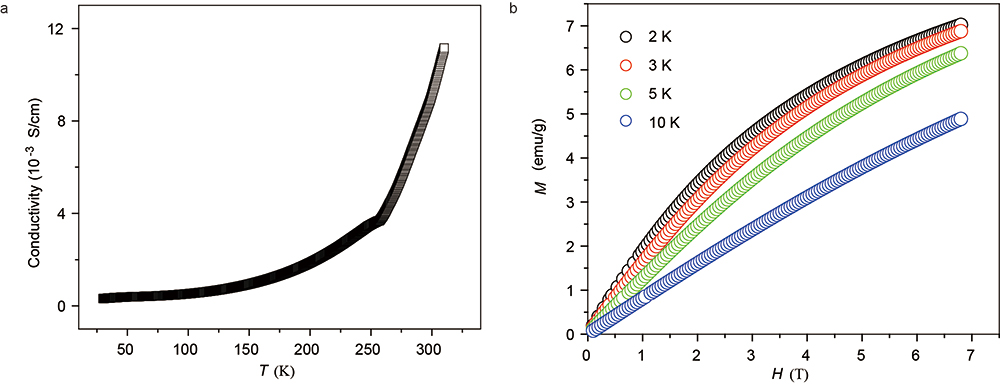주메뉴
- About IBS 연구원소개
-
Research Centers
연구단소개
- Research Outcomes
- Mathematics
- Physics
- Center for Underground Physics
- Center for Theoretical Physics of the Universe (Particle Theory and Cosmology Group)
- Center for Theoretical Physics of the Universe (Cosmology, Gravity and Astroparticle Physics Group)
- Dark Matter Axion Group
- Center for Artificial Low Dimensional Electronic Systems
- Center for Theoretical Physics of Complex Systems
- Center for Quantum Nanoscience
- Center for Exotic Nuclear Studies
- Center for Van der Waals Quantum Solids
- Center for Relativistic Laser Science
- Chemistry
- Life Sciences
- Earth Science
- Interdisciplinary
- Center for Neuroscience Imaging Research (Neuro Technology Group)
- Center for Neuroscience Imaging Research (Cognitive and Computational Neuroscience Group)
- Center for Algorithmic and Robotized Synthesis
- Center for Nanomedicine
- Center for Biomolecular and Cellular Structure
- Center for 2D Quantum Heterostructures
- Institutes
- Korea Virus Research Institute
- News Center 뉴스 센터
- Career 인재초빙
- Living in Korea IBS School-UST
- IBS School 윤리경영


주메뉴
- About IBS
-
Research Centers
- Research Outcomes
- Mathematics
- Physics
- Center for Underground Physics
- Center for Theoretical Physics of the Universe (Particle Theory and Cosmology Group)
- Center for Theoretical Physics of the Universe (Cosmology, Gravity and Astroparticle Physics Group)
- Dark Matter Axion Group
- Center for Artificial Low Dimensional Electronic Systems
- Center for Theoretical Physics of Complex Systems
- Center for Quantum Nanoscience
- Center for Exotic Nuclear Studies
- Center for Van der Waals Quantum Solids
- Center for Relativistic Laser Science
- Chemistry
- Life Sciences
- Earth Science
- Interdisciplinary
- Center for Neuroscience Imaging Research (Neuro Technology Group)
- Center for Neuroscience Imaging Research (Cognitive and Computational Neuroscience Group)
- Center for Algorithmic and Robotized Synthesis
- Center for Nanomedicine
- Center for Biomolecular and Cellular Structure
- Center for 2D Quantum Heterostructures
- Institutes
- Korea Virus Research Institute
- News Center
- Career
- Living in Korea
- IBS School
News Center
Novel sponge-like 2D material with interesting electrical conductivity and magnetic propertiesResearchers synthesize a new 2D Metal Organic Framework with an ever-growing list of possible applications Chemists at the Center for Multidimensional Carbon Materials (CMCM), within the Institute for Basic Science (IBS, South Korea), have reported the synthesis of a novel type of 2D metal organic framework (MOF) with interesting electrical conductivity and magnetic properties. Published in the Journal of the American Chemical Society, this new material may potentially contribute to optoelectronics, photovoltaics, (photo)electrocatalysis, and energy storage. Also known as sponge-like or Swiss-cheese-like materials, MOFs are made of metal ions connected to organic ligands and are characterized by nano-sized holes. IBS researchers in collaboration with the School of Materials Science at the Ulsan National Institute of Science and Technology (UNIST) designed and synthesized Ni(II) tetraaza[14]annulene-linked MOF (NiTAA-MOF), where the metal component is nickel and the nickel tetraaza[14]annulene molecules are used as MOF building blocks for the first time.
The researchers discovered that doping this MOF with iodine changes its conductivity and magnetism. Pristine NiTAA-MOF conducts poorly. It is actually an insulator with an electrical conductivity smaller than 10-10 Siemens per centimeter. However, when it is chemically oxidized by iodine, the same measurement rises to 0.01 Siemens per centimeter (the larger this number, the better the conductor). This result shows the vital role of ligand oxidation in the electrical conductivity of some 2D MOFs, expanding the understanding of the origin of electrical conductivity in this type of MOFs. In addition, the team checked how this material becomes magnetized in an applied magnetic field. Magnetization measurements performed by the researchers of the School of Materials Science showed that iodine-doped NiTAA-MOF is paramagnetic, that is it is weakly attracted by an external magnetic field, and becomes antiferromagnetic at very low temperatures. This means that it could become useful as a polarizing agent in dynamic nuclear polarization-nuclear magnetic resonance (DNP-NMR) that is used in experiments for material characterization. The 2D MOF structure was also modeled through detailed calculations and analyzed by a variety of methods, such as X-ray diffraction, infrared, X-ray photoelectron, diffuse reflectance UV-vis, electron paramagnetic resonance, and Raman spectroscopies. “Our work can contribute to the fundamental understanding of structure-property relationships in 2D electrically conductive MOFs, and may pave the way to develop new electrically conductive MOFs,” says Professor Ruoff, one of the corresponding authors of this study and UNIST professor. “Besides, the as-synthesized and iodine-doped NiTAA-MOF might be applicable in catalase mimics, catalysis, and energy storage.” Notes for editors - References - Media Contact - About the Institute for Basic Science (IBS) |
|||
|
|
| Next | |
|---|---|
| before |
- Content Manager
- Public Relations Team : Yim Ji Yeob 042-878-8173
- Last Update 2023-11-28 14:20










![Figure 1. Chemical structure of iodine-doped Ni(II) tetraaza[14]annulene-linked MOF (NiTAA-MOF). While NiTAA-MOF is an insulator, the oxidized molecule acquires electrical conductivity and paramagnetism.](https://www.ibs.re.kr:443/dext5data/2019/10/20191031_161737327_32519.jpg)


